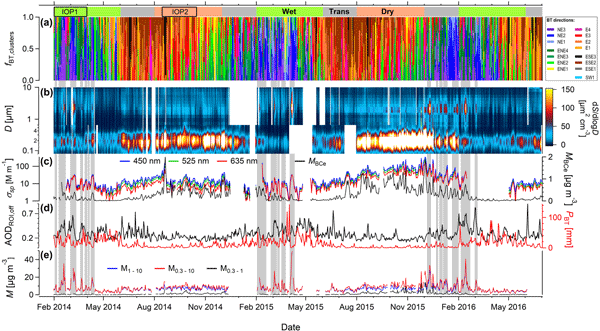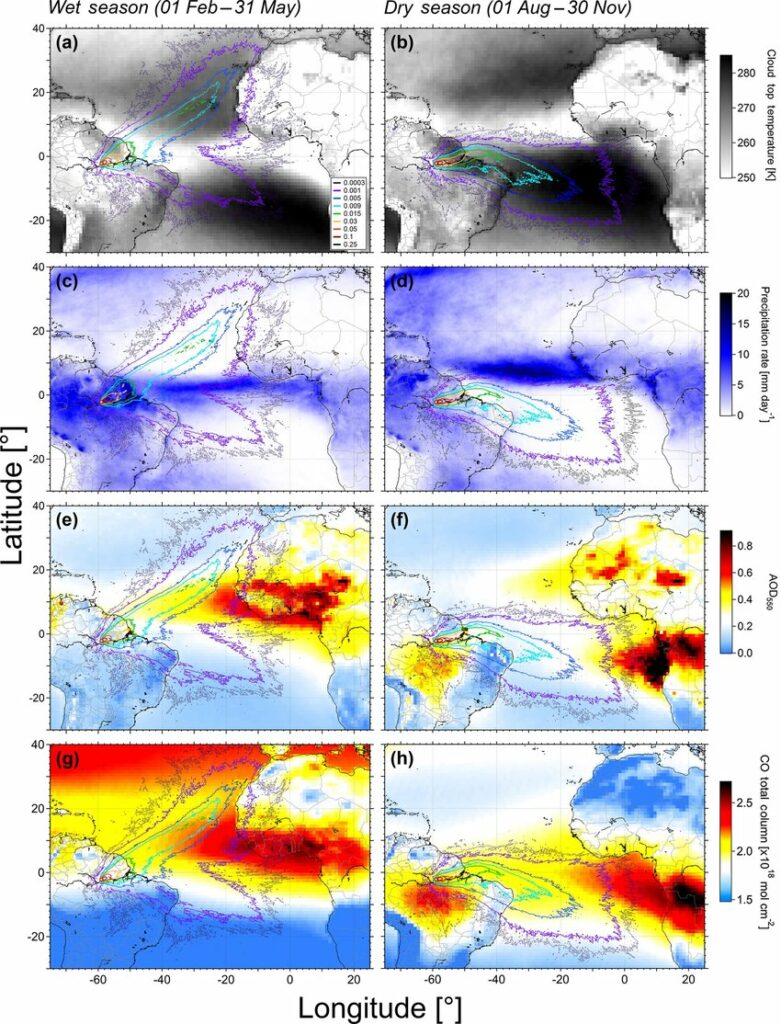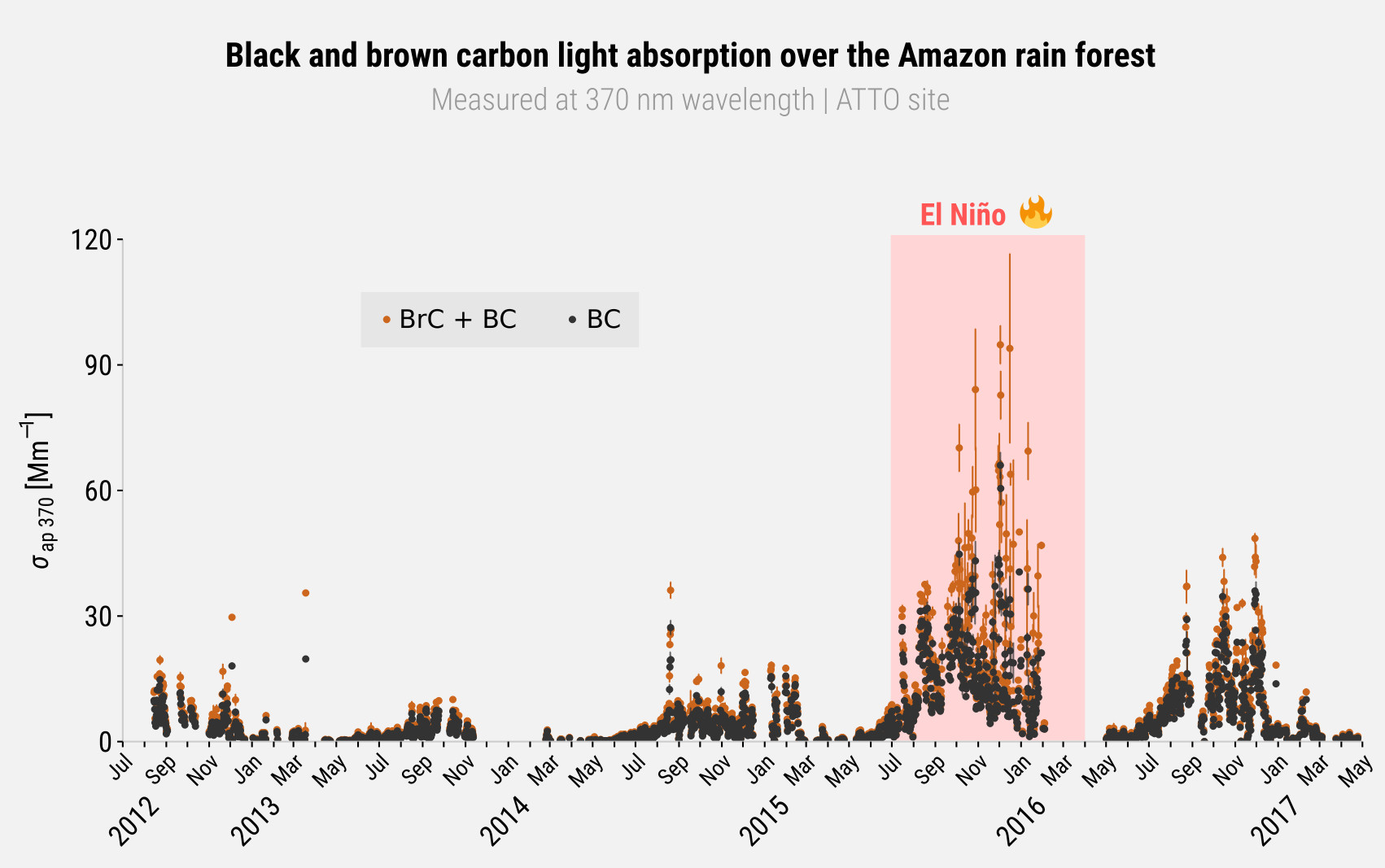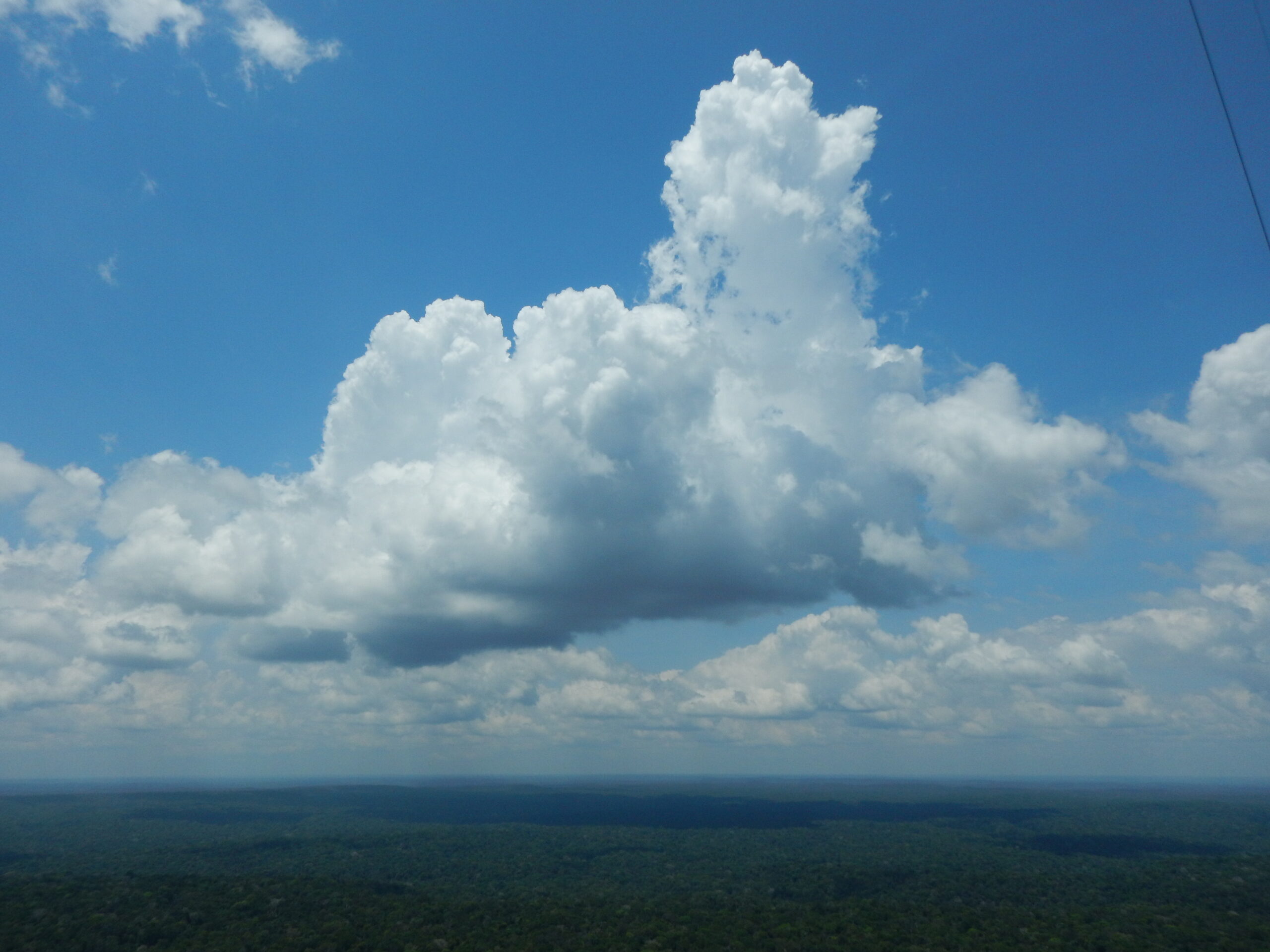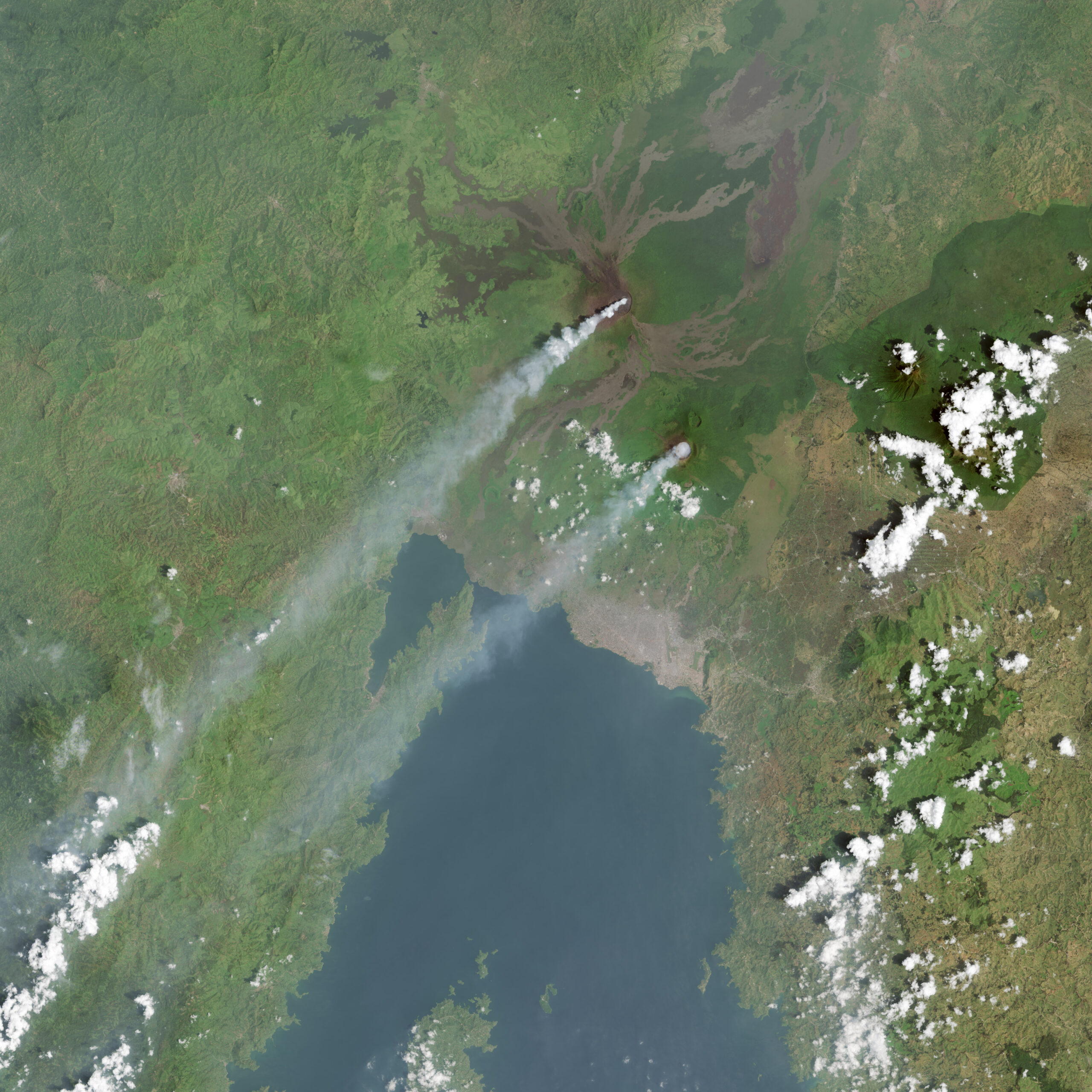You have probably heard a lot about air pollution recently, be it because of the massive wildfires in California, smog in India or the diesel emission scandal in Germany. So let’s look into air pollution in the Amazon. Most air pollutants are actually aerosols. Identifying these aerosols and their chemical composition can help us understand where they come from and to what extent certain regions are affected by air pollutions. That is exactly what Li Wu and co-authors did in their new study in the Amazon rainforest.
They collected and analyzed aerosols in two locations: the city of Manaus, a large urban area in Brazil, and the ATTO site in the heart of the forest. The samples were collected during the wet season when ATTO is mainly influenced by air masses from the Atlantic and is located upwind from Manaus. And indeed they found that at ATTO the aerosols are mostly of organic origin, emitted by the forest itself. Additionally, they could identify mineral dust and sea-salt particles. In contrast, they frequently found soot, fly ash and particles containing heavy metals in the samples in Manaus. These are most likely produced by human activities. The good news is that such anthropogenic particles are still largely absent from the atmosphere over the rainforest, showing us that pristine wilderness regions do still exist. That is, at least during the wet season when the winds blow in the “right” direction.
The scientists published the study in Atmospheric Chemistry and Physics (ACP) and is available Open Access here.



